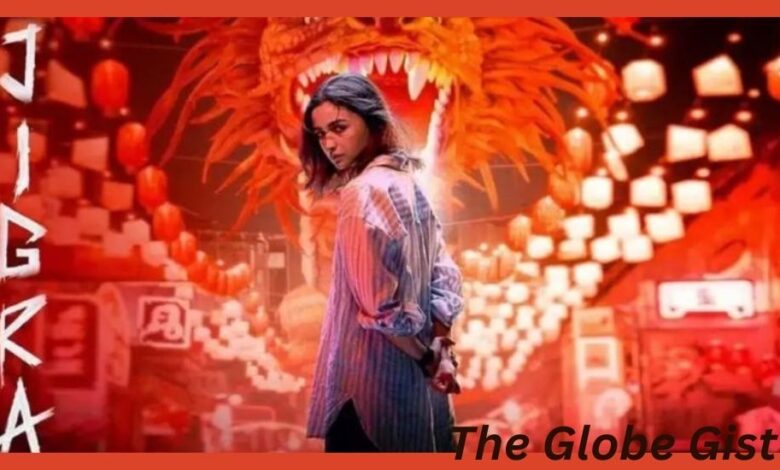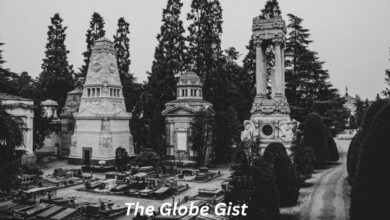Hanshi Dao: The Fictional Nation That Captured Global Curiosity

In the vast landscape of cinema, fictional countries often serve as powerful narrative devices. They allow filmmakers to explore themes of politics, justice, and culture without drawing direct parallels to real nations that might spark diplomatic controversies. One such compelling example is Hanshi Dao, a fictional East-Asian island nation brought to life in the Bollywood film Jigra (2024). Since its introduction, Hanshi Dao has sparked global curiosity, debates among moviegoers, and deeper analysis from critics who see in it a reflection of real-world anxieties.
Hanshi Dao is not a real country, yet it feels believable because of its carefully constructed cultural and political backdrop. With influences drawn from Southeast Asian cityscapes, authoritarian laws that echo strict regimes in parts of Asia, and a cinematic atmosphere that blends spectacle with tension, Hanshi Dao becomes a central character in Jigra. In this article, we’ll dive into what Hanshi Dao represents, how it was constructed, why it has attracted so much attention, and what it says about our modern cinematic imagination.
The Role of Hanshi Dao in Jigra
In Jigra, Hanshi Dao is not just a backdrop—it is an active force that shapes the narrative. The story follows two siblings caught in an emotional and dangerous journey after one is imprisoned in this fictional nation. The choice of Hanshi Dao as the setting is deliberate: it gives the filmmakers room to craft a space with exaggerated laws and authoritarian elements that might be deemed too controversial if linked to an actual state.
The most striking element about Hanshi Dao in the film is the harsh legal system. The country is shown to have zero tolerance for crime. Scenes reference extreme punishments, including death sentences for drug-related offenses and heavy fines for seemingly minor acts like public crying or laughing. This creates a dystopian image of a nation where citizens are watched constantly and punished for any form of disobedience.
For the audience, Hanshi Dao becomes a looming antagonist. It represents an oppressive force that the characters must resist or escape, amplifying the emotional tension of the story.
Visual Inspiration: How Hanshi Dao Was Built
Even though Hanshi Dao is fictional, it looks startlingly real on screen. The filmmakers of Jigra used Singapore and Mumbai’s Kandivali district as primary filming locations, supplemented by extensive visual effects (VFX). Singapore, with its futuristic skyline and reputation for strict laws, provided the perfect template for the imagined nation. The Kandivali sets, enhanced with CGI, allowed the production team to build dense cityscapes that merged East-Asian architectural motifs with high-tech, almost cyberpunk-like visuals.
This hybrid approach made Hanshi Dao visually striking. On one hand, it feels rooted in Asia’s modern megacities—Singapore, Hong Kong, Kuala Lumpur. On the other, it has enough invented details that the audience never mistakes it for a real place. By using real urban backdrops and layering them with cinematic imagination, Hanshi Dao emerges as a city-state that is both plausible and surreal.
Laws and Governance of Hanshi Dao
At the heart of Hanshi Dao’s cinematic identity lies its draconian system of governance. The laws depicted in Jigra are not random; they are a combination of real-world inspirations and fictional exaggeration. For example:
-
Strict penalties for drugs: Hanshi Dao imposes the death penalty for drug trafficking, a direct reflection of policies in countries like Singapore, Indonesia, and Malaysia.
-
Fines for emotional expression: The nation also criminalizes public crying or laughing, handing out fines for disrupting “public harmony.” This aspect adds an Orwellian touch, highlighting the suppression of individuality.
-
Surveillance-heavy society: Hanshi Dao is depicted as a place where cameras and guards monitor citizens everywhere, creating a constant sense of paranoia.
By combining elements from real authoritarian systems with fictional extremes, Hanshi Dao becomes a symbolic canvas. It dramatizes the conflict between state power and personal freedom, a theme that resonates across cultures.
Linguistic and Cultural Significance of the Name
The very name Hanshi Dao is layered with cultural resonance. Though not explained in the film, it carries strong East-Asian linguistic undertones:
-
Hanshi is a Japanese martial-arts honorific, meaning “master” or “teacher.”
-
Dao is a Chinese word (刀) that literally translates to “sword,” and it also refers to philosophical pathways in Daoism or geographical markers in East Asia.
When combined, “Hanshi Dao” can be interpreted as “Island of the Master Sword” or “Path of the Master.” Whether or not the filmmakers intended this exact meaning, the name adds to the sense of mystery and exoticism surrounding the nation.
Audience and Critical Reaction
Since Jigra’s release, Hanshi Dao has been one of its most talked-about elements. Critics praised the filmmakers for creating a believable and visually stunning fictional country, while audiences debated whether the exaggerated laws were symbolic or simply dramatic devices.
On social media platforms like Reddit and Twitter, fans speculated about why the filmmakers invented Hanshi Dao instead of naming a real Southeast Asian country. Some argued that it avoided diplomatic backlash, while others suggested that the fictional setting allowed the story to explore themes of justice and family without being constrained by reality.
International reviews also highlighted Hanshi Dao as one of the film’s most intriguing aspects. By giving the narrative a “foreign” yet familiar setting, the filmmakers managed to evoke both curiosity and unease.
Symbolism of Hanshi Dao in Cinema
Fictional nations have long been a staple of global cinema, from Wakanda in Black Panther to Panem in The Hunger Games. Hanshi Dao joins this tradition, serving not only as a narrative setting but also as a metaphor.
Hanshi Dao symbolizes:
-
Excessive state control – echoing fears of surveillance and authoritarianism.
-
The dangers of blind justice – highlighting what happens when laws are rigid and compassionless.
-
A test of loyalty and love – by placing the siblings in a hostile environment, it tests their bond against the power of the state.
This makes Hanshi Dao more than just a backdrop; it becomes a character in its own right, representing larger anxieties about freedom, justice, and morality in the modern world.
Behind the Scenes: Creating a Fictional Nation
The creation of Hanshi Dao involved collaboration between location scouts, set designers, and VFX artists. According to production reports, the film crew:
-
Shot major sequences in Singapore for its clean, futuristic visuals.
-
Used sets in Mumbai’s Kandivali for indoor prison and street scenes.
-
Enhanced cityscapes digitally to blend real and imagined architecture.
This fusion gave Hanshi Dao a unique identity—realistic enough to immerse viewers, yet fantastical enough to spark imagination.
The Legacy of Hanshi Dao
Even though Hanshi Dao exists only within Jigra, it has taken on a life of its own. Online articles, blogs, and fan forums continue to analyze its meaning, speculate on its inspirations, and even create fan art of the fictional nation. In doing so, Hanshi Dao illustrates the power of storytelling: when a fictional place is built convincingly, it can transcend the boundaries of the screen and enter cultural conversation.
Hanshi Dao might never appear on a map, but it has secured a place in the cinematic geography of memorable fictional nations.
Conclusion
Hanshi Dao is a striking example of how fictional settings can enrich storytelling. By drawing from real-world inspirations while layering in imaginative elements, the filmmakers of Jigra created a nation that is both visually compelling and thematically resonant. Its authoritarian laws, linguistic echoes, and symbolic weight make it more than just a setting—it is a mirror of society’s deepest fears and questions.
As discussions about Hanshi Dao continue online, one thing is clear: sometimes, the most powerful worlds in cinema are the ones that don’t exist. For readers who want to stay connected with more explorations of culture, film, and society, you can always find deeper insights at The Globe Gist.
Q1: Is Hanshi Dao a real country?
A: No, Hanshi Dao is a fictional nation created specifically for the Bollywood film Jigra (2024). It does not exist in real-world geography.
Q2: Where was Hanshi Dao filmed?
A: The visuals of Hanshi Dao were created using real locations in Singapore and sets built in Mumbai’s Kandivali area, combined with extensive VFX to make the fictional nation believable.
Q3: Why did the filmmakers choose to invent Hanshi Dao instead of using a real country?
A: By creating a fictional country, the filmmakers had the freedom to design strict laws, authoritarian settings, and dramatic narratives without offending or misrepresenting any real nation.
Q4: What kind of laws does Hanshi Dao have in the film?
A: Hanshi Dao is portrayed as having extremely harsh laws, including the death penalty for drug trafficking and fines for simple acts like laughing or crying in public.
Q5: What does the name “Hanshi Dao” mean?
A: The film does not explain the meaning, but linguistically, Hanshi is a Japanese honorific for “master,” and Dao (刀) is a Chinese word meaning “sword” or “path,” giving the name an East-Asian cultural flavor.
Q6: Is Hanshi Dao inspired by real countries?
A: Yes, elements of Hanshi Dao’s design draw inspiration from Singapore’s skyline, Hong Kong’s urban feel, and Southeast Asian countries known for strict drug laws.
Q7: How important is Hanshi Dao in the story of Jigra?
A: It is central to the plot since one of the main characters is imprisoned there, and the harsh justice system drives the narrative tension of the film.
Q8: Did critics talk about Hanshi Dao in their reviews?
A: Yes, many critics highlighted Hanshi Dao as one of the film’s most unique elements, praising its visual construction and debating its symbolic meaning.
Q9: Will Hanshi Dao appear in other films?
A: Currently, Hanshi Dao exists only in Jigra. There has been no official statement about reusing it in sequels or other films.
Q10: Why has Hanshi Dao sparked online discussions?
A: Audiences find the nation intriguing because it blends realism with imagination, raises questions about authoritarianism, and symbolizes the dangers of extreme state control.
Thanks for read our article if you want more like this kind of article visit our site The Globe Gist, and comment us.


